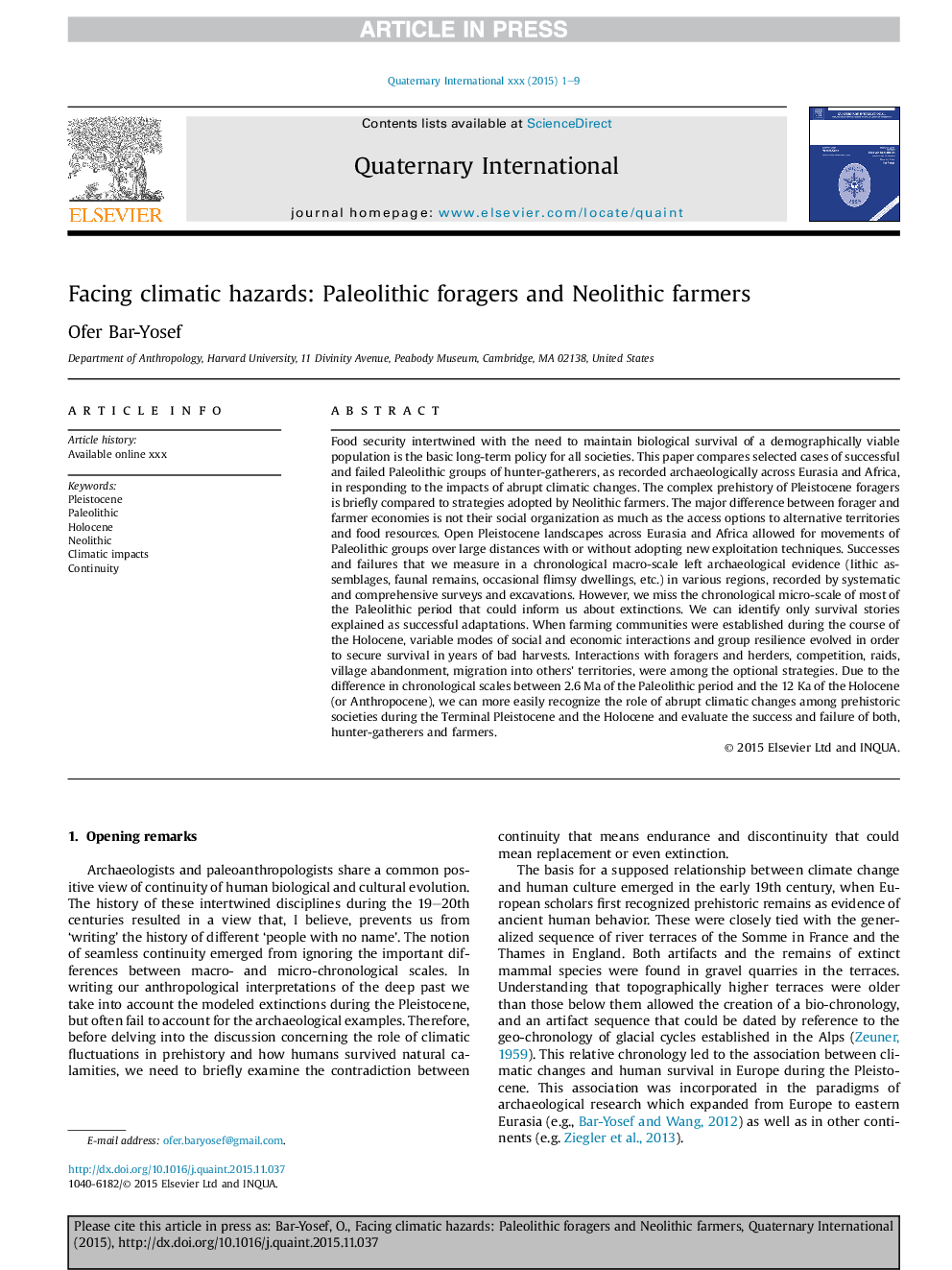| کد مقاله | کد نشریه | سال انتشار | مقاله انگلیسی | نسخه تمام متن |
|---|---|---|---|---|
| 5113529 | 1377937 | 2017 | 9 صفحه PDF | دانلود رایگان |
عنوان انگلیسی مقاله ISI
Facing climatic hazards: Paleolithic foragers and Neolithic farmers
ترجمه فارسی عنوان
در مواجهه با خطرات اقلیمی: پرورش دهنده های پالئولیتی و کشاورزان نوسنگی
دانلود مقاله + سفارش ترجمه
دانلود مقاله ISI انگلیسی
رایگان برای ایرانیان
کلمات کلیدی
پلستوسن، پالئولیت، هولوسن، ارتفاعات، اثرات آب و هوایی، تداوم،
موضوعات مرتبط
مهندسی و علوم پایه
علوم زمین و سیارات
زمین شناسی
چکیده انگلیسی
Food security intertwined with the need to maintain biological survival of a demographically viable population is the basic long-term policy for all societies. This paper compares selected cases of successful and failed Paleolithic groups of hunter-gatherers, as recorded archaeologically across Eurasia and Africa, in responding to the impacts of abrupt climatic changes. The complex prehistory of Pleistocene foragers is briefly compared to strategies adopted by Neolithic farmers. The major difference between forager and farmer economies is not their social organization as much as the access options to alternative territories and food resources. Open Pleistocene landscapes across Eurasia and Africa allowed for movements of Paleolithic groups over large distances with or without adopting new exploitation techniques. Successes and failures that we measure in a chronological macro-scale left archaeological evidence (lithic assemblages, faunal remains, occasional flimsy dwellings, etc.) in various regions, recorded by systematic and comprehensive surveys and excavations. However, we miss the chronological micro-scale of most of the Paleolithic period that could inform us about extinctions. We can identify only survival stories explained as successful adaptations. When farming communities were established during the course of the Holocene, variable modes of social and economic interactions and group resilience evolved in order to secure survival in years of bad harvests. Interactions with foragers and herders, competition, raids, village abandonment, migration into others' territories, were among the optional strategies. Due to the difference in chronological scales between 2.6Â Ma of the Paleolithic period and the 12Â Ka of the Holocene (or Anthropocene), we can more easily recognize the role of abrupt climatic changes among prehistoric societies during the Terminal Pleistocene and the Holocene and evaluate the success and failure of both, hunter-gatherers and farmers.
ناشر
Database: Elsevier - ScienceDirect (ساینس دایرکت)
Journal: Quaternary International - Volume 428, Part B, 15 January 2017, Pages 64-72
Journal: Quaternary International - Volume 428, Part B, 15 January 2017, Pages 64-72
نویسندگان
Ofer Bar-Yosef,
